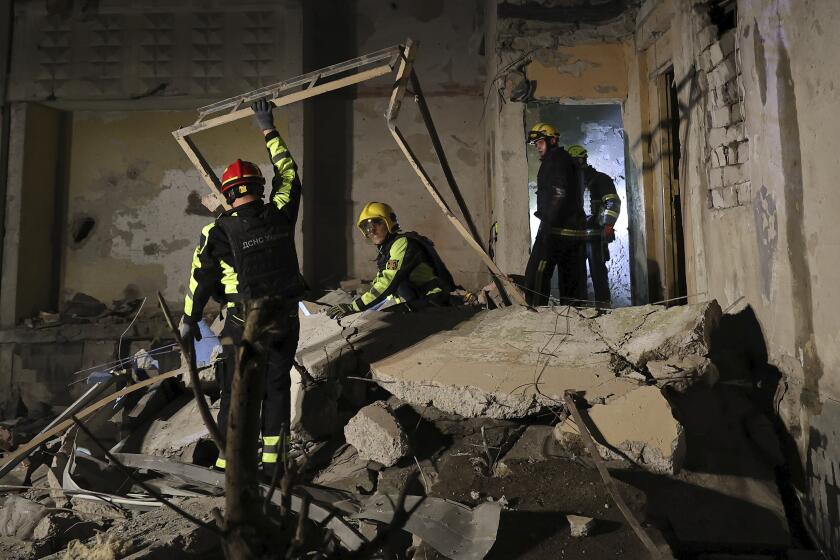Questions Raised About Bomb Plan
A report by a nonpartisan congressional research group says sharp increases in the proposed budget to build a “bunker buster” nuclear bomb raises questions about whether the controversial program is only a study, as U.S. officials have contended.
Last year, Defense Secretary Donald H. Rumsfeld said the effort was “a study. It is nothing more and nothing less.” But a report from the Congressional Research Service says the five-year, $485-million budget proposal “seems to cast serious doubt on assertions that the Robust Nuclear Earth Penetrator is only a study.”
The report notes that the program, budgeted for $7.5 million in the current fiscal year, would grow to $27.6 million in fiscal 2005, under the proposal. Spending would rise to a peak of $128 million in fiscal 2008, followed by $88 million in 2009.
By the end of that period, according to this schedule, the Energy Department would have a bomb design and would develop a process for building it.
Advocates say a nuclear bomb with a special hardened shell could burrow underground before exploding and destroy buried structures that conceal arsenals and command centers.
Countries including North Korea and several nations in the Middle East, have built extensive underground military facilities, hoping to elude the reach of American conventional military power. Advocates argue that such a weapon would enable the U.S. to deter future underground projects. Foes argue that its use could devastate nearby populations and set off a new nuclear arms race.
The Congressional Research Service report, issued to Congress on Monday, was not intended for public distribution. But the Federation of American Scientists, an arms control advocacy group, obtained a copy, which was posted on its website.
Brian Wilkes, a spokesman for the Energy Department’s National Nuclear Security Administration, insisted Wednesday that policymakers had not decided to build the bomb; rather, he said, the budget figures were developed only to fulfill the congressional requirement to have a five-year plan.
“This is a placeholder budget,” Wilkes said. “We have to plan for every contingency.”
Steven Aftergood of the Federation of American Scientists said the government does not propose five-year budgets for every research program that might be approved for development.
“If they had placeholders for every funding scenario, they’d have to request an infinite amount of money,” Aftergood said. “This is an expression of intent to move ahead with an expanded program.”
Congressional opponents have tried to cut funding and restrict the program’s pace. Last year, they succeeded in requiring the administration to win special congressional approval to move from research into the development phase of the program.
But one opponent, California Rep. Ellen O. Tauscher (D-Alamo) said figures showed “they’ve been slow-walking us on the details, but fast-tracking money in order to go full steam ahead” if there is a Republican House and Senate after the November elections.
Tauscher has written to Linton F. Brooks, administrator of the Nuclear Security Agency, saying that in the past, “we were told that the [bunker buster] effort was to be a three-year study that would cost $15 million a year. This is the first notice we have received of a significantly ramped-up activity,” she said.
More to Read
Sign up for Essential California
The most important California stories and recommendations in your inbox every morning.
You may occasionally receive promotional content from the Los Angeles Times.










